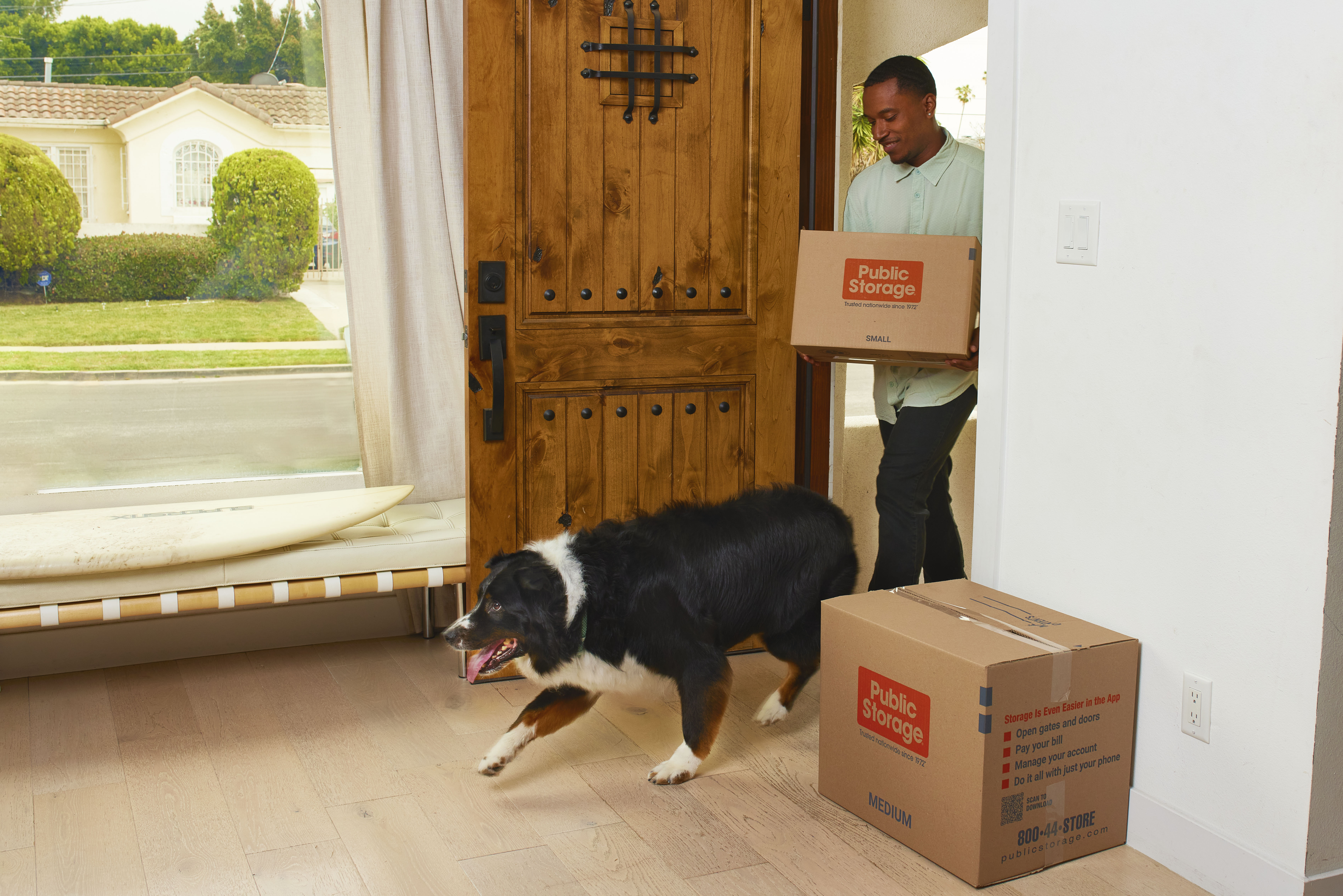
Introducing a Pet to a New Home: Fur-Friendly Moving Tips
Jul 10, 2024 / Alyssa Duranty
When Aimee Kunau and her husband decided to move across state lines to be closer to family, they knew they would need fur-friendly moving tips to help them take special care of their extended “fur family” when they introduced their pets to the new home.
“Moving takes a little more research with pets in tow, but the advantage is that they will always be with you,” she said. “It’s worth the extra time and care.”
The family paced themselves during their two-thousand mile road trip—from Cincinnati to Boise—to make sure everyone stayed calm and stress-free, humans included.
If you’re ready to move with your fur babies and want some ways to help them with the major transition, read on for Kunau’s tips as well as advice from a veterinary behavior therapist. Because nothing’s too good for little Fido.
Gets Pets Acclimated to Moving
Animals can start to stress out before the moving truck is packed, said Dr. Rachel Malamed, a veterinary behaviorist based in Los Angeles.
“Environmental change such as the introduction of new objects, unfamiliar or loud sounds and general disruption of routine can be fear eliciting for many animals,” she said.
So move pets into a different room while packing and unpacking to avoid added stress, she recommended.
To help their two Labradors and two house cats get used to the idea of moving, Kunau drove them around town in the cars they’d later move in.
“During the process of selling our home, we requested a couple hours’ notice to get the dogs and cats in the cars,”; she said. “It got them used to being the car for extended periods of time, and it helped get them ready for the mindset of the move.”
The more rides they took, the less stressed her furry companions felt. So come moving day, it was just another ride for them and they did not fear their new home.
Keep Pets Calm During and After a Move

Following these fur-friendly moving tips are important because dogs and cats can feel change, which can cause anxiety. It is important to provide extra attention and positive reinforcement with treats during a move so pets do not see your home in a negative light.
“Moving into a new space can seriously impact some animals while others may appear to integrate seamlessly but demonstrate subtle signs of fear that could be difficult to recognize,” said Malamed.
Some signs of fear Malamed recommends to look to for include: ears back, tail tucked, hiding, cowering, trembling, clinginess, not taking treats or following commands, yawning, licking lips, tensing up and avoidance.
“See how your pet reacts and go SLOW,” she said. “Give your dog or cat a lot of affection and attention. (Only if they like this of course!).”
When the Kunau crew stopped at their various hotels along the journey to Idaho, the couple stayed with their pets and provided them with plenty of attention.
“They had a few toys during the trip and enjoyed low-key evenings with lots of potty breaks and plenty of rest,” she said.
Kunau recently wrote an e-book to help other pet parents with cross-country moves that is due out later this year.
Create a Relaxing Environment in a New Home

If you can, move your pets into your new home after you unload your stuff and create a positive environment for them with calming scents, like lavender oil or synthetic pheromones. Keep an eye out for any stressed reactions and change the environment accordingly, said Malamed.
“A special ‘safe haven’ or room can be set up for the dog or cat with food, treats, favorite toys and a familiar bed or crate as well as a litterbox and scratching posts for cats,” she added.
“Some cats and dogs will enjoy exploring the new environment while others may be more at ease if limited to one room and with gradual access to the rest of the house.”
It’s also important to establish routines as early as possible.
“Structure makes life more predictable,” said Malamed.
Labradors Blue and Lizzie took to their new Boise backyard immediately, said Kunau, which helped them enjoy the new home while the family moved in their boxes.
“We paid attention to them and showed them the ropes,” she said. “After a couple of days, it’s like we’d always been here.”
We hope following these fur-friendly moving tips help create a smooth transition to your new home!






